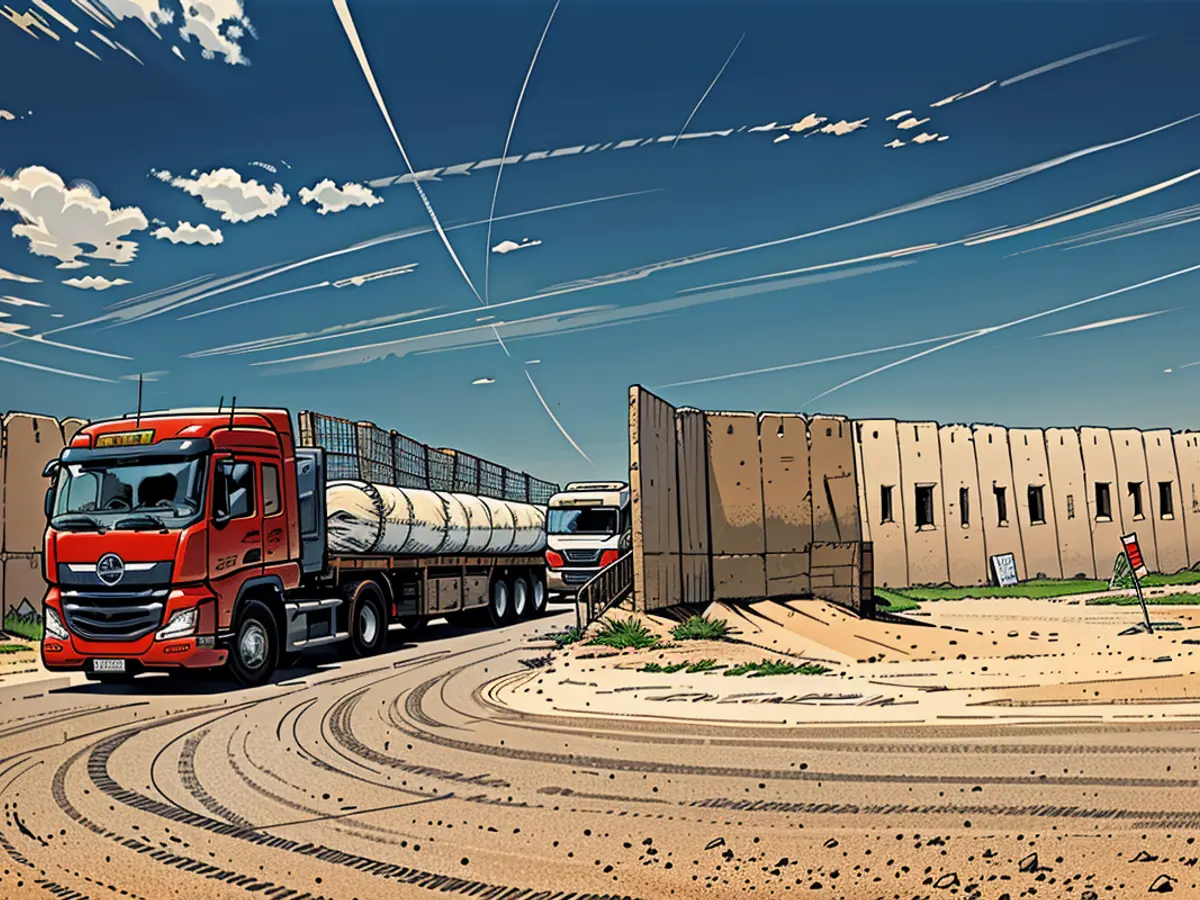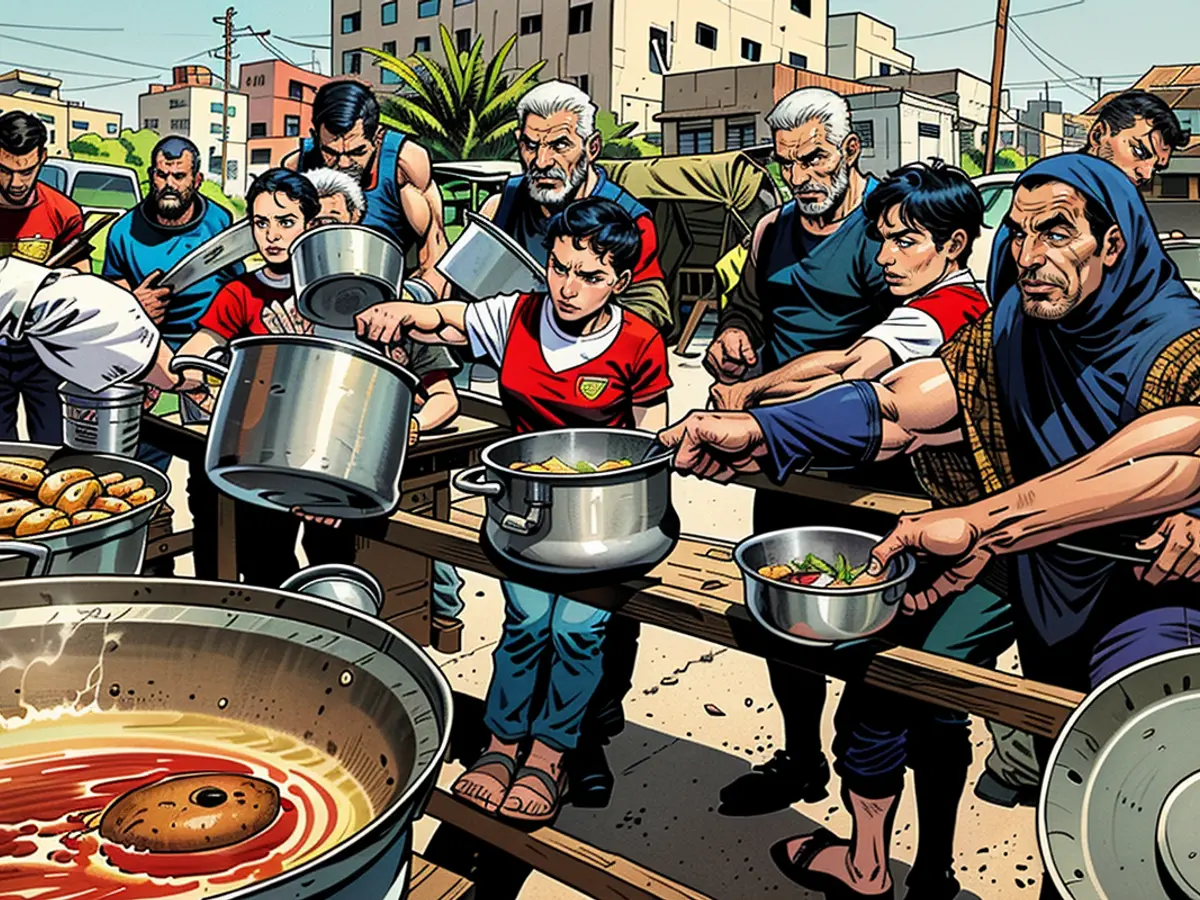Israel halts activities on Gaza's southern route temporarily to facilitate aid delivery, while continuing its offensive in Rafah without relaxation.
Daily pause initiated on Saturday and continues until further notice, from 8 a.m. to 7 p.m. local time, to facilitate the movement of trucks from Kerem Shalom Crossing – the primary entry point for aid to southern Gaza – up Salah al-Din Road and northward, as announced by the IDF.
The ongoing Israeli military campaign in Gaza has exacerbated a humanitarian crisis by creating a bottleneck of aid at Kerem Shalom, due to airstrikes and battles in southern Gaza.
The IDF has designated a specific route from Kerem Shalom to Al Bayuk, followed by the European Hospital in Khan Younis, to be open during daytime hours for the purpose of humanitarian aid transportation in cooperation with international organizations. This is part of an effort to increase the volume of aid reaching Gaza, the IDF stated.
However, the IDF later clarified that the fighting in Rafah persists, with no change in the imports of goods into the Strip.
Intense combat has been occurring in Rafah as Israel tries to eradicate Hamas in Gaza. On Saturday, eight IDF soldiers lost their lives near the city, marking one of the deadliest incidents for Israeli troops during the war.
Humanitarian catastrophe
Human rights groups have referred to "inexpressible" living conditions for Palestinians in Gaza following eight months of relentless Israeli bombing, with over 75% of the population displaced, as per the UN’s agency for Palestinian refugees (UNRWA). Israel’s military operations have destroyed neighborhoods, damaged medical facilities, and depleted supplies of food, water, and fuel.
More than 37,000 people have been killed in Israel’s offensive in Gaza, according to data from the Ministry of Health in Gaza. The Gaza conflict commenced after the October 7 attacks carried out by the Palestinian militant group Hamas, which killed approximately 1,200 people and captured 250 hostages in southern Israel.
More than 50,000 children in Gaza now require treatment for acute malnutrition, UNRWA announced on Saturday.
"With ongoing restrictions on access to humanitarian aid, people in #Gaza continue to face unbearable levels of hunger. Over 50,000 children require treatment for acute malnutrition."
Last month, Israel expanded its ground operation in central Rafah, causing hundreds of thousands of displaced individuals to flee the area.
Internally displaced Palestinians are estimated to be living in an area of just 69 square kilometers (27 square miles) – less than one-fifth of the territory's area.
Aid has been delivered to Gaza by land, sea, and air ever since the war started, but few entry points remain functional. The functional entry points are Kerem Shalom on Gaza's southern border and Western Erez in the north.
Humanitarian agencies insist that land routes are the most efficient method for delivering aid to Gaza on a grand scale. However, even when aid crosses into Gaza, there are numerous hindrances in distributing it due to Israeli approval requirements, damaged roads, and challenging security conditions.
Efforts to bring aid via sea have encountered setbacks after the US military stated on Friday that it would disassemble the humanitarian pier it constructed off the coast of Gaza due to strong seas.
This will be the second time in a short period that the fragile pier and causeway system, known as Joint Logistics over the Shore or JLOTS, has needed to be moved back to the Israeli port of Ashdod.

Read also:
The World Health Organization has expressed concern over the worsening health situation in the Middle East, specifically in Gaza, due to the ongoing conflict.
Despite the temporary pause in activities on Gaza's southern route, the delivery of essential aid to various locations within Gaza, such as the European Hospital in Khan Younis, remains a significant challenge due to Israeli approval requirements and damaged roads.







